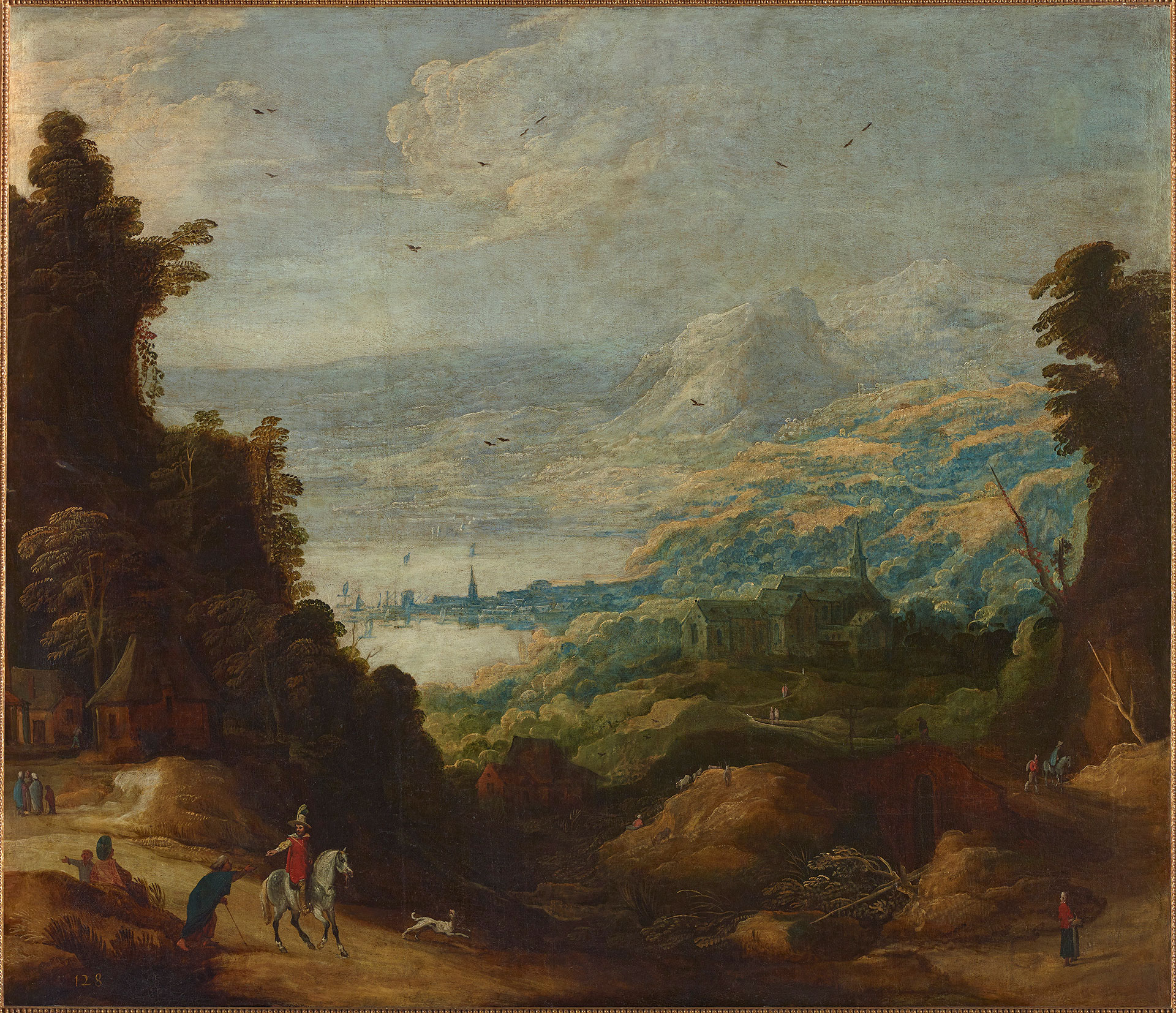
Joost de Momper (Amberes, Bélgica, 1564-1635)
Mountain Landscape
Circa 1625-1630
WORK INFORMATION
Oil on canvas, 140 x 162 cm
Joost de Momper was a multifaceted Flemish artist who practised engraving, drawing and painting, although he is best known to posterity for his skill in the latter genre. After completing an apprenticeship with his father Bartholomeus Momper, a little-known painter active in Antwerp during the most turbulent period of the city's history, Joost joined the local painters' Guild of St. Luke around 1581. The first reports of his activity reveal that he was connected to the ruling house of the Spanish Netherlands from very early on. One of his first known projects dates from 1594, when he worked with the painter Cornelis Floris on the temporary decorations for Archduke Ernest of Austria's entrance into Antwerp. The following year we know that he designed several tapestries for Archduke Albert of Austria. There is evidence of a brief, scantily documented trip through Italy, a period from which several drawings of landscapes and city views have survived. These works are in the line of Paul Brill, the great Flemish landscape artist, slightly older than Joost, whose art was immensely popular in Italy. They also bear a certain resemblance to the work of the Italianised Flemish painter Ludovico Pozzoserrato (Lodewijk Toeput), active in Venice, which suggests that Momper may have visited the Adriatic city. In the 1590s he was back in Antwerp, and by 1611 he had become dean of the Guild of St. Luke.
Although almost none of his works can be dated with any certainty, we can see a clear stylistic evolution in them. Momper's early paintings are characterised by the presence of abrupt, geometric mountains, at times with a path winding up the slopes. These works are closely related to the painting of Tobias Verhaecht, one of Rubens's teachers, and conceptually similar to the mountain landscapes of Pieter Brueghel the Elder, where the menacing side of nature is made patent by the effects of light and general sense of drama. They are also obviously indebted to the pictorial style of Joachim Patinir, the father of Flemish landscape art.
Momper's most prolific period, from 1600 to 1625, is marked by more realistic compositions with a strong topographical tendency rendered in a light, loose style that conveys the natural sensibility of the landscapes. At the same time, human activities became increasingly prominent in his oeuvre. Similarly, the traditional method of using three basic colours—brown, green and blue—to compose the different picture planes that we see in his early works gradually gave way to less complicated compositions based on the existence of only two principal registers. This must be the period in which he painted Mountain Landscape, a work that came from the collection of the Marquess of Leganés and was already in Spain during the painter's lifetime, making it a splendid example of the admiration he earned from the leading collectors of the day and the wide distribution of his work throughout Europe.
Momper's late output did not evolve dramatically; his mountain landscapes grew larger and his brushwork looser, but he continued to paint the same motifs. Approximately fifty autograph works have been identified to date, and there are many instances of collaboration with other artists given the system of specialisation used by Flemish painters. His direct disciples include Louis Caulery and Jan Fouquier. [José Juan Pérez Preciado]

